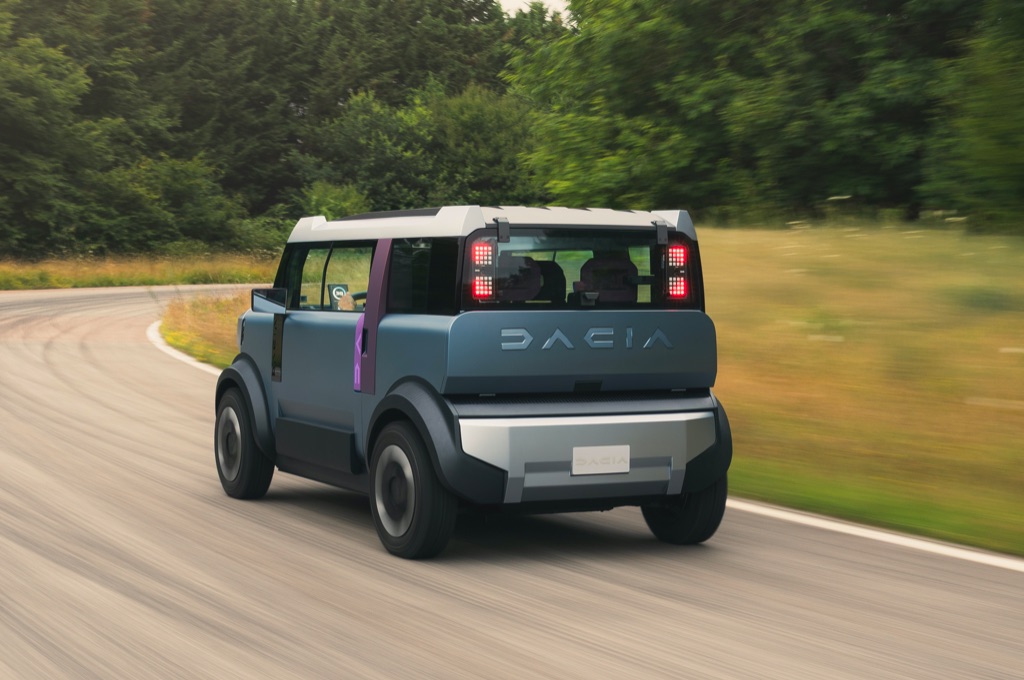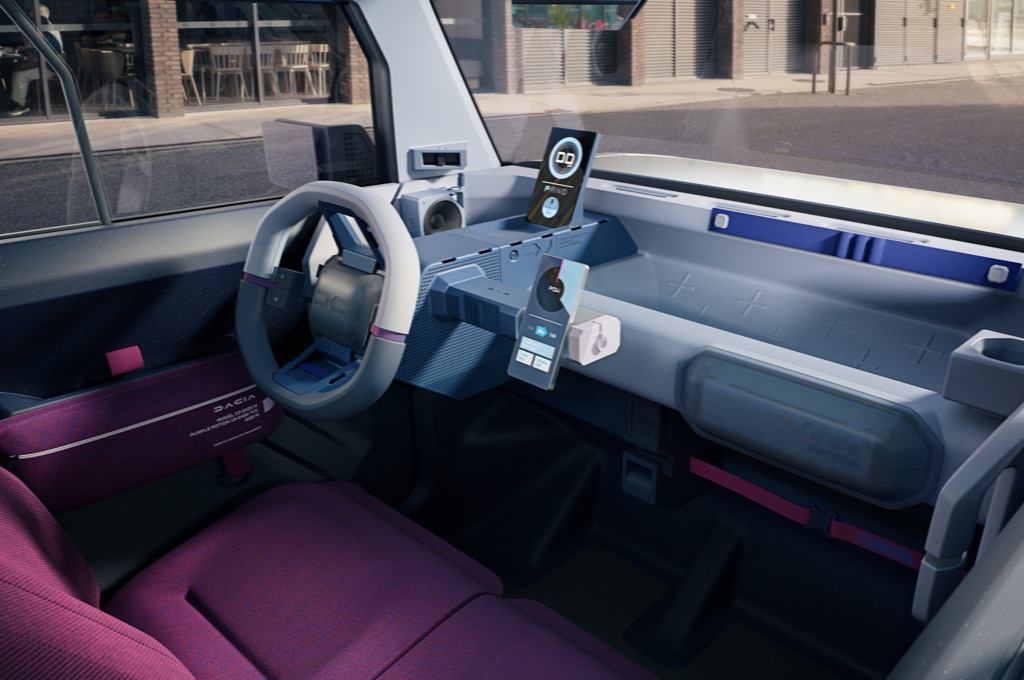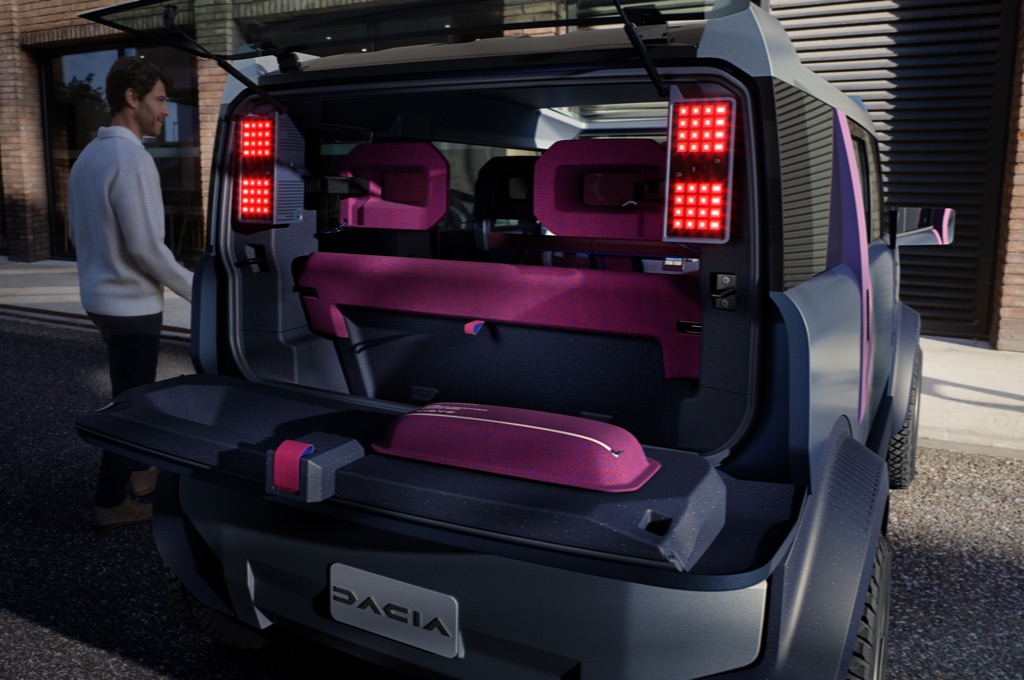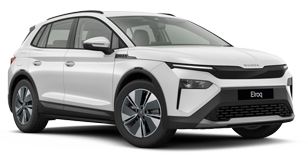Dacia has unveiled a bold new vision for affordable electric mobility with the Hipster, a compact four-seat EV concept that channels the minimalist spirit of icons like the original Mini, Fiat 500 and Volkswagen Beetle.
Weighing under 800kg and measuring just 3.0 metres long, 1.55 metres wide and 1.53 metres tall, the Hipster is shorter than any car currently on sale – yet it still squeezes in four full-sized seats and offers up to 500 litres of boot space with the rear seats folded. Dacia claims that’s enough to carry a washing machine.
The Romanian brand says the Hipster represents a return to essential mobility, offering simple, sustainable, and low-cost transport in an age where rising prices and increasingly strict regulations have pushed affordable cars to the brink of extinction.
.jpg)
Built around a “design-to-cost and design-to-weight” philosophy, the Hipster is designed to show what could be achieved if manufacturers were given more flexibility to create small, efficient electric cars for a proposed new European ‘E-car’ category of compact EVs.
At less than 800kg, the Hipster is around 20 per cent lighter than Dacia’s own Spring EV – currently one of Europe’s cheapest electric cars. The weight reduction isn’t just about cost savings: it also helps to halve the car’s lifecycle carbon footprint compared with today’s cleanest EVs.
Dacia hasn’t revealed the Hipster’s battery size or motor output but says it’s “sized as needed” for urban driving, with the average driver only expected to charge twice a week based on typical daily journeys of around 24 miles.
The Hipster’s simplicity extends to its cabin. There’s no built-in infotainment screen; instead, drivers slot their smartphone into a dedicated mount – part of Dacia’s ‘bring your own device’ ethos. The car is also unlocked via an app rather than a traditional key.
.jpg)
Despite its tiny footprint, the Hipster’s interior surprisingly accommodating, thanks to vertical body sides, wide-opening doors and a tilting front bench seat. The use of sliding glass windows avoids the need for bulky mechanisms, while fabric door pulls replace traditional handles to save weight and cost.
The Hipster also features 11 of Dacia’s ‘YouClip’ accessory mounts throughout the cabin, allowing owners to attach add-ons such as cupholders, Bluetooth speakers and extra lighting, letting drivers personalise their cars without expensive factory options.
Externally, the Hipster’s design is squat and blocky, taking inspiration from utilitarian classics like the Fiat Panda, Citroën 2CV and Land Rover Series I. Its designers argue that cheap, functional cars can still be desirable, just as the people’s cars of the past once were.
Dacia says the Hipster concept is a response to rising vehicle weights, power outputs and prices driven by ever-stricter safety and emissions legislation.
.jpg)
Across Europe, the average new car is said to be 15 per cent heavier and 63 per cent more expensive than it was a decade ago, while the used car market has seen prices rise 45 per cent since 2010. The Hipster is intended to demonstrate that affordable, efficient cars still have a place in the modern market if rules are adapted to suit them.
According to Dacia, the Hipster concept is fully driveable and finished to near-production standards. However, its commercial future depends on the EU’s legislative stance and the feasibility of building such cars profitably. While there’s no firm launch date, Dacia’s design and engineering teams believe a production version could be made viable if the ‘E-car’ category receives approval and rules allow lighter, simpler vehicles to be built.












